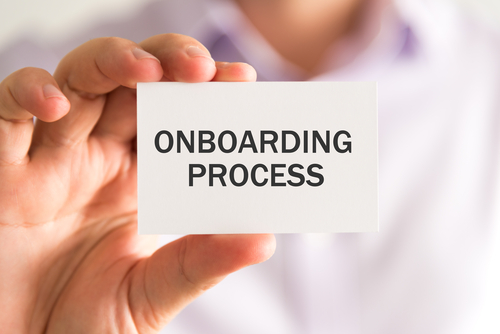It’s estimated that 47 million people left their jobs in 2021 according to the U.S. Bureau of Labor Statistics, prompting a flurry of “Now Hiring” announcements as everyone from major corporations to small businesses struggle to attract and retain top talent.
Of course, many of these workers didn’t leave the workforce. They changed jobs, looking to align their values and personal ambitions with their professional pursuits. As a New York Times headline succinctly proclaimed, “All of those quitters? They’re at work.” That’s why the Great Resignation is better described as a Great Reshuffle.
This subtle change has significant long-term ripple effects and implications for HR departments charged with hiring and onboarding new employees. Getting people in the door might be easier than they expected, but encouraging them to stay is a more arduous task.
In the pandemic-altered business landscape, employee onboarding should be more than a check-the box-formality. It may make the difference 6 months down the line in retaining or losing a new hire.
The Problem with Employee Onboarding
The pandemic has altered our work lives in many ways. This is especially true for companies embracing remote or hybrid work arrangements. Even as employee productivity levels soar, workers are feeling more disconnected from their companies and co-workers.
Today, many HR teams are conducting employee onboarding online, creating entire cohorts that have never interacted with or met any of their colleagues in person. Many people join and leave new jobs without truly connecting with their colleagues and companies, creating an attitude within the workplace that makes it fairly easy feeling-wise to leave.
Consequently, an employee survey by Bamboo HR found that 30 percent of new hires leave their jobs within six months, while a separate survey by SilkRoad and CareerBuilder found that 10 percent of respondents identified employee onboarding as the reason for leaving.
Whether HR teams are preparing new hires in a virtual setting or connecting in-person, it’s clear that enhancing employee retention is predicated, in part, on improving employee onboarding.
In total, a Gallup poll found that only 12 percent of employees say their company has an excellent onboarding process, making it clear that most organizations can improve their methods as an extension of their employee retention efforts.
How Businesses Can Respond
The first day at a new job is exciting. It represents a new opportunity to work with compelling coworkers, contribute to a meaningful mission, develop new skills, and take a step towards career advancement. The first day also brings a lot of uncertainty, apprehension, and self-doubt.
When implemented effectively, employee onboarding is an opportunity to harness the excitement of the moment while providing opportunities to overcome potential challenges or pitfalls to a new experience by acclimating employees to their new jobs, integrating them with existing teams, and connecting new hires to the company’s mission, values, and philosophy.
Here are two ways that HR departments can facilitate that process moving forward.
- 1. Enhance Onboarding Success with Cohort Learning. Cohort learning brings people together to learn about a single subject. Often, these groups are composed of people with similar professional responsibilities or circumstances (like being hired at the same time).
- The process involves team collaboration, peer reflection, and meeting senior managers. This facilitates a variety of important results. For instance, when managers and team leads participate in this process, new hires are more than three times more likely to say the experience was a success.
In other words, cohort learning enhances individual development while allowing managers to connect with and develop new talent.
This strategy can be applied to the orientation or employee onboarding process, helping employees make more positive emotional connections to their leaders and their peers and preparing them for success in their first days and weeks on the job.
Embrace Skill Development
Too often, employee onboarding is an onslaught of activity and paperwork that satisfies technical requirements without connecting new hires to their companies. The average onboarding experience includes over 50 activities, complicating the process instead of propelling tangible outcomes.
Instead, companies should emphasize skill development, including emotional and social skills, that help employees flourish, including:
- Effective communication methods
- Work-life balance opportunities
- Day-to-day teamwork best practices
- Successful meeting structures
- Supportive, emotionally safe relational structures.
These skills are particularly well-suited for cohort learning, and when taught successfully, they position new hires to thrive, making it more likely that high-quality talent will stick around for the long haul.
Tangible Outcomes
HR departments should consider employee onboarding as a critical part of their employee retention efforts. When done right, these programs help make employees happier and more productive.
The Harvard Business Review explains that “companies that implement a formal onboarding program could see 50% greater employee retention among new recruits and 62% greater productivity within the same group.
Since these employees are more likely to remain at the organization than their dissatisfied, less-productive counterparts, employee onboarding is one part of the hiring process that they can control, ensuring that they are responding to Great Resignation or the Great Reshuffle with employee onboarding processes that makes a measurable impact that lasts.
Barry Rosen serves as the Chief Executive Officer of Interaction Associates, a pioneer in creative problem-solving, collaborative leadership, and group facilitation. As CEO, Barry’s mission is to empower associates to make decisions and provide services that help clients achieve their goals. Barry is the designer and developer of much of Interaction Associates’ intellectual content, including leadership, teamwork, and facilitation learning programs. Interaction Associates is best known for introducing the concept and practice of group facilitation to the business world in the early 1970’s. For over 50 years, IA has provided thousands of leaders and teams with practical, simple, and effective programs, tools, and techniques for leading, meeting, and working better across functions, viewpoints, and geographies. Learn more by visiting https://www.interactionassociates.com/ and connect with Barry on LinkedIn.
The post How to Enhance Employee Retention by Rethinking the Onboarding Process appeared first on HR Daily Advisor.
